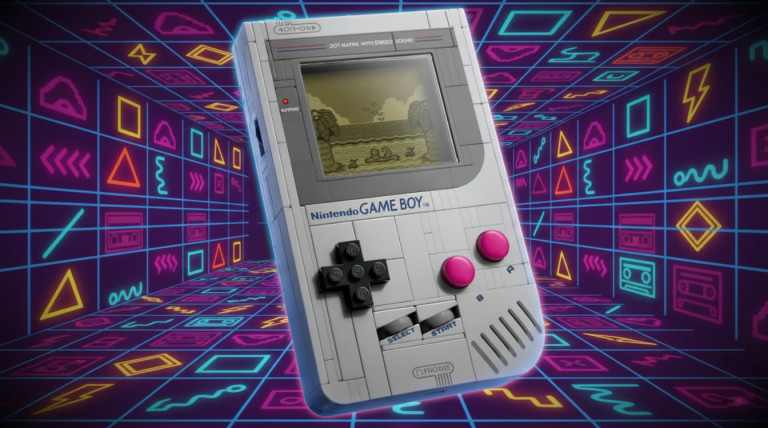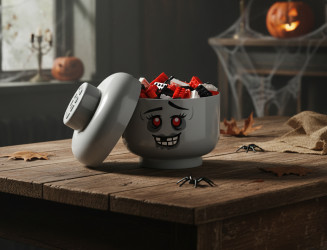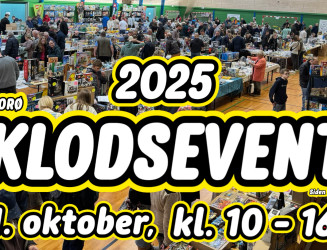The LEGO® Game Boy (72046) is supposed to be pure nostalgia. You build it, admire it, maybe swap out its lenticular screens, and call it a day. But modder Natalie the Nerd looked at it and thought, “Why stop at looks?” So she didn’t. Instead, she cracked open the tiny build and added an actual, functioning screen. The result is part art, part engineering, and completely irresistible to anyone who ever blew dust out of a Game Boy cartridge.

This is the kind of project that makes you question where LEGO ends and tech begins.
When LEGO® Met Nintendo, Again
Let’s set the stage. The LEGO® Game Boy 72046, launched for $59.99 USD / €56.70 / £49.10 / 93.60 AUD / 426.40 DKK / 636.30 SEK / 253.70 PLN / 339.20 BRL, is the smallest of LEGO’s gaming nostalgia line. With 421 pieces, it builds a near-perfect replica of Nintendo’s original handheld. You get clever lenticular screens showing Super Mario Land, The Legend of Zelda: Link’s Awakening, and the classic Nintendo logo. The buttons move, the power switch clicks, and the stickers look ripped straight from 1989.
That’s where most people would stop. Natalie didn’t.
The Display Upgrade
The mod starts with the Game Boy’s display window, a neat 6x6 stud square that happens to fit a 2-inch LCD panel like a glove. Natalie chose a Scenrade ST7789V SPI display module, a small but sharp screen often used in maker projects. To mount it, she designed a 3D-printed adapter to fill in the slight gaps. For anyone without a 3D printer, she suggested cutting a simple black cardboard frame.
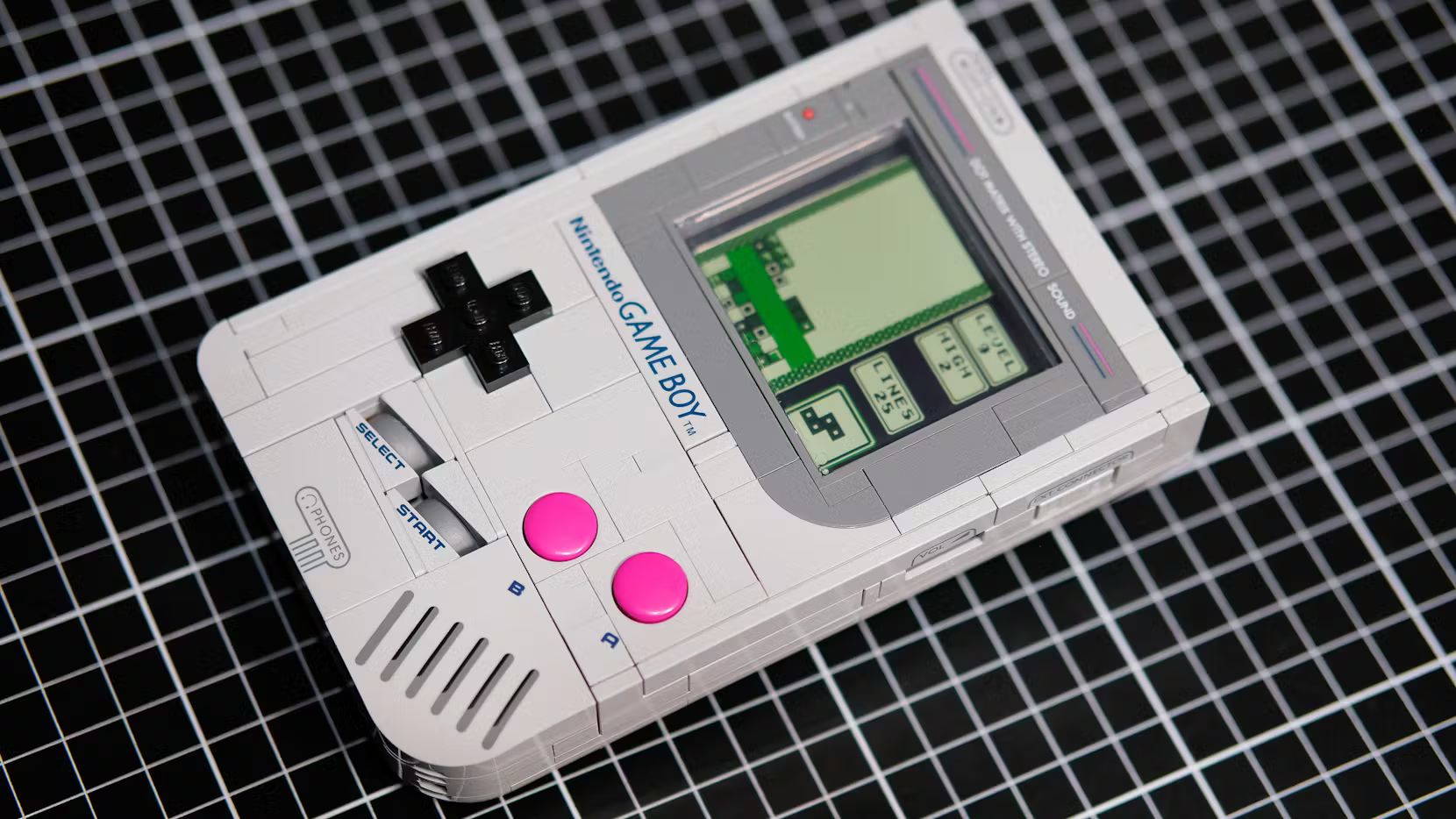
Once installed, the new screen lights up with the glow every ‘90s kid remembers. The lenticular illusion gives way to real pixels, a backlit display showing crisp Game Boy visuals. It’s still encased in LEGO plastic, but the illusion of a living console is uncanny.
Bringing Bricks to Life
To power the screen, Natalie tucked a Raspberry Pi RP2350 microcontroller behind the faceplate, connecting it through SPI. The chip runs a fork of the Pan-GB emulator, modified to support various small displays. That means this LEGO Game Boy doesn’t just light up. It runs real ROMs.
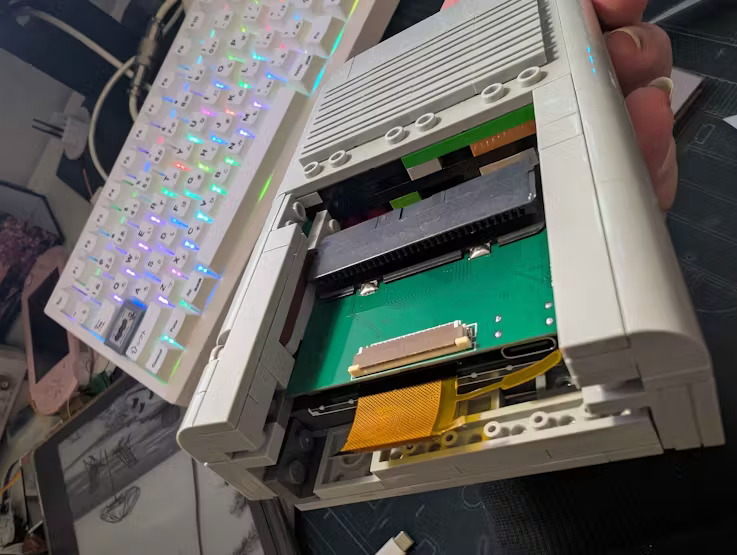
Inside, the build retains LEGO’s nod to circuitry, greens, browns, and golds that mimic a printed circuit board. The difference is that Natalie’s version hides an actual working circuit behind it. The nostalgia gets literal: your brick Game Boy now is a Game Boy.
The Details That Matter
Natalie’s blog post dives deep into her process: cutting space for cables, tuning display brightness, and fitting everything back together without breaking the LEGO shell. She even added a mock “backup battery” detail inside the cartridge slot, a nod to the coin-cell batteries that stored save data in original Game Boy cartridges.
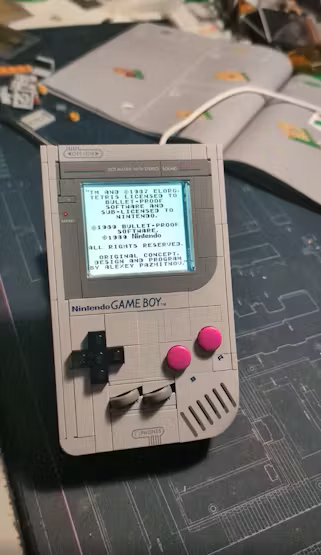
Right now, her version focuses on the display. It plays demo sequences and animations through the emulator. But she points out that the firmware already supports button input and sound. That means a fully functional, playable LEGO Game Boy is theoretically one mod away. Add power, add wiring, and you’ve got a handheld console wrapped in nostalgia and ABS plastic.
Nostalgia Rewired
LEGO built the Game Boy 72046 to celebrate retro gaming. Natalie turned it into retro gaming itself. There’s something poetic about that: LEGO made a toy version of a console, and a fan made that toy into a console again. Plastic became pixels, imagination became circuitry.
It’s part of a growing movement of builders blurring the line between LEGO and real-world hardware. We’ve seen mechanical mods before, lights, motors, even motion. But adding a working digital display to a LEGO set? That’s next-level commitment.
If you want to follow her work or try the project yourself, Natalie the Nerd shares files, schematics, and emulator code on her blog and YouTube channel. Just don’t expect LEGO to offer tech support if you fry your bricks.
Join the Conversation
Would you risk your LEGO® Game Boy (72046) for a real screen? Or is the charm in keeping it brick-pure? Whether you’re a purist or a tinkerer, one thing’s certain: LEGO may build nostalgia, but fans like Natalie make it play.
